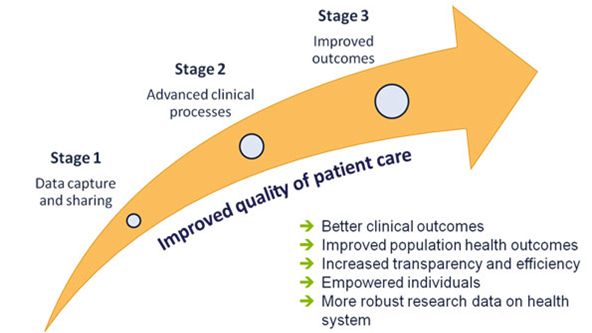Meaningful Use consists of 15 core criteria that providers must complete in order to qualify for $44,000 or more in Electronic Health Record (EHR) incentives. There are 10 additional criteria that are considered a la carte menu items, from which only five need to be demonstrated by the medical provider. In total, each provider must complete 20 criteria—listed in detail below—to qualify for stimulus payments during phase one of the EHR incentive programs.
Our clinical team and policy experts are supplying users with updated information about how to qualify for EHR stimulus funds. When the time comes to submit an attestation to prove Meaningful Use, our support specialists will walk you through all stages of qualification. We aim to make the EHR incentive process as easy as possible for our users.
Mandatory Meaningful Use Criteria:
- Record patient demographics (including gender, race and ethnicity, date of birth, preferred language) at least 50% of the time
- Record vital signs (height, weight, blood pressure, body mass index, and growth charts for children) at least 50% of the time
- Maintain up-to-date problem lists at least 80% of the time
- Maintain active medication lists at least 80% of the time
- Maintain active medication allergy lists at least 80% of the time
- Record smoking status for patients older than 13 years of age at least 50% of the time
- Provide patients with a clinical summary for each office visit within 3 business days, at least 50% of the time
- On request, provide patients with an electronic copy of their health information (including test results, problem lists, meds lists, allergies) within 3 business days, at least 50% of the time
- Generate electronic prescriptions at least 40% of the time
- Use Computerized Physician Order Entry (CPOE) for medication orders at least 30% of the time. (note: CPOE for lab ordering, imaging ordering, and referrals are not addressed here – only medications)
- Implement drug-drug and drug-allergy interaction checks at least 40% of the time
- Be able to exchange key clinical information among providers by performing at least one test of the EMR's ability to do this.
- Implement one clinical decision support rule, and ability to track compliance with the rule (this is reduced from the previous 5 rules to the final 1 rule)
- Implement systems that protect privacy and security of patient data in the EMR, by conducting or reviewing a security risk analysis, and taking corrective step if needed
- Report clinical quality measures to CMS or states – for 2011 provide aggregate numerator and denominator through attestation; for 2012, electronically submit measures (this refers to PQRI measures)
Menu Meaningful Use Criteria:
- (Eligible providers must demonstrate at least five of the following ten items)
- Implement drug-formulary checking
- Incorporate lab test data into the EMR as structured data
- Generate lists of patients by specific conditions (to use for quality improvement, reduce disparities, research, or outreach)
- Use EMR technology to identify patient-specific education resources, and provide those to the patient as appropriate – and do this at least 10% of the time
- Provide medication reconciliation between care settings, at least 50% of the time
- Provide summary of care record for patients transferred to another provider or setting, at least 50% of the time
- Submit electronic immunization data to local registries (performing at least one test of data submission, where registries can accept them)
- Submit electronic syndrome surveillance to public health agencies (perform at least one test, where local agencies can accept them)
- Send reminders to patients (per patient preference) for preventive and follow-up care, at least 20% of the time, or for over-65 year-olds or under=5 year-olds)
- Provide patients with timely electronic access to their health information, at least 10% of the time.
